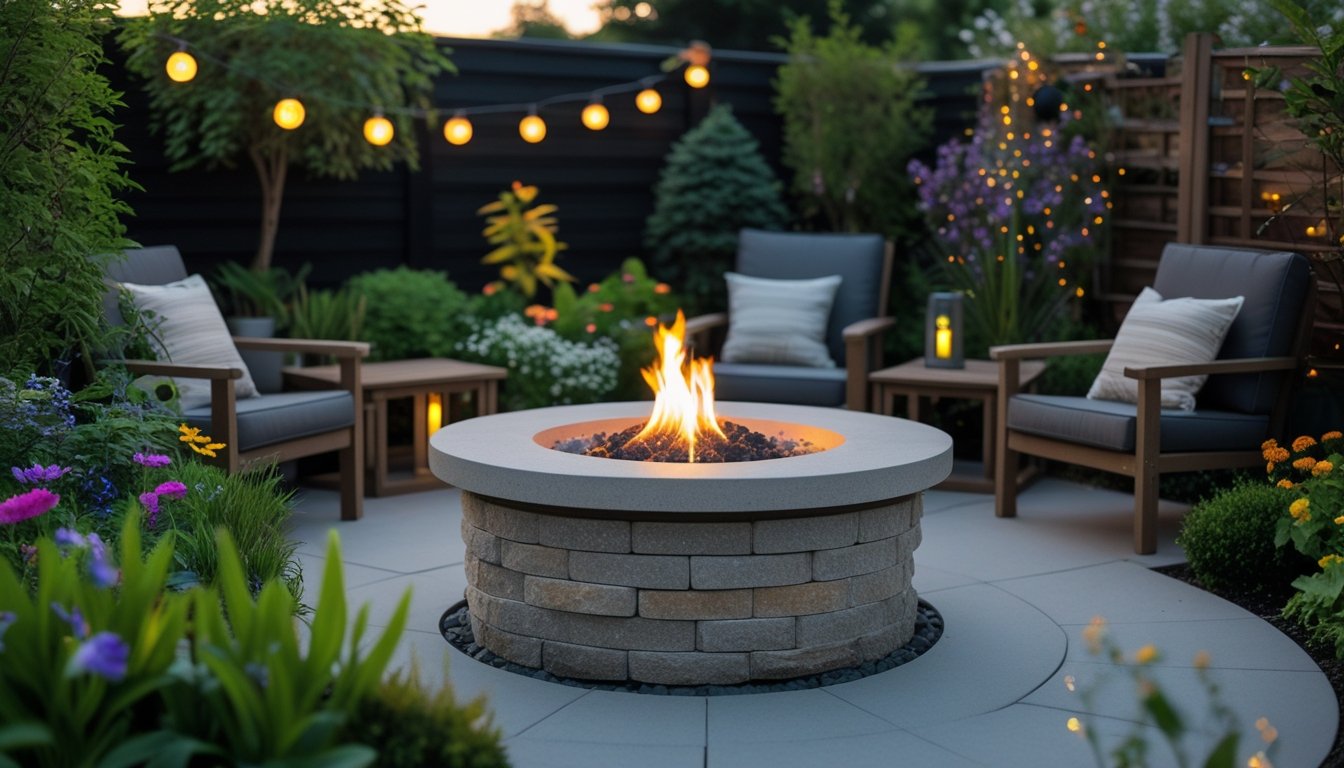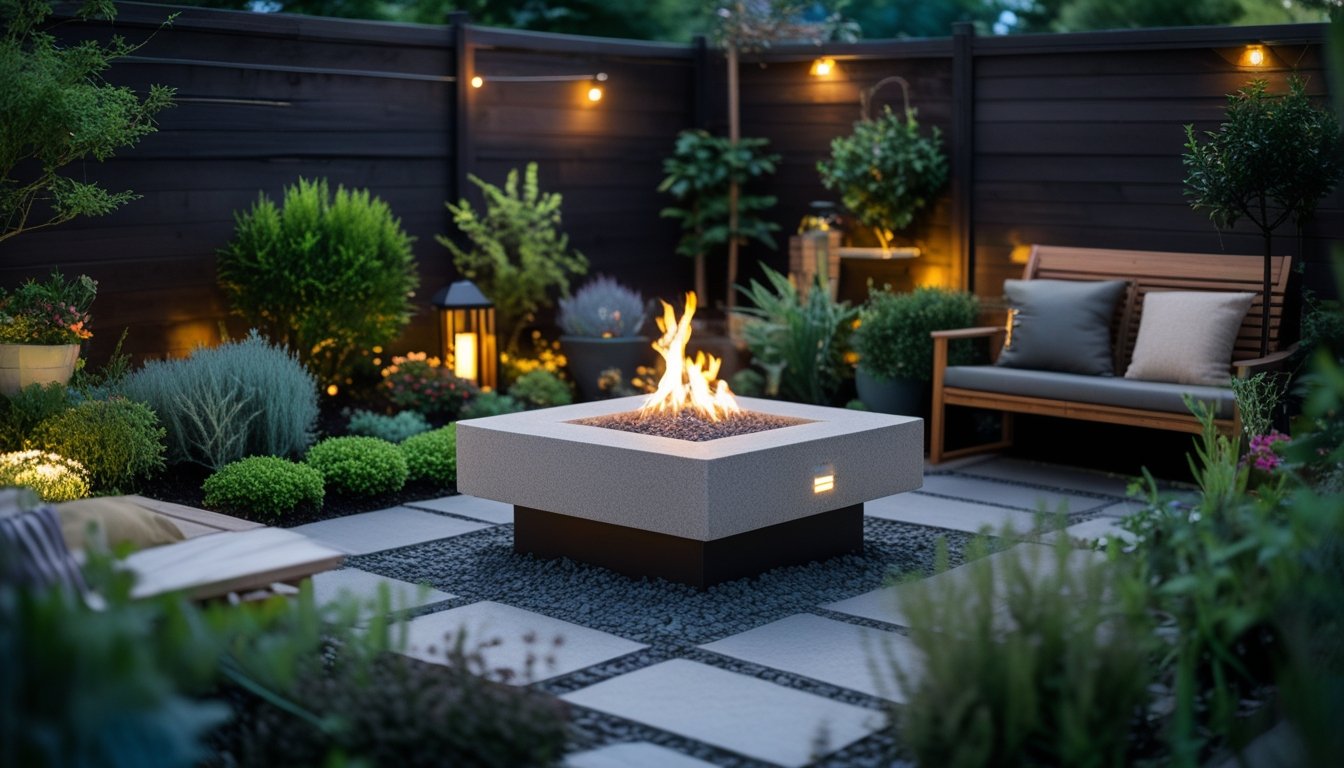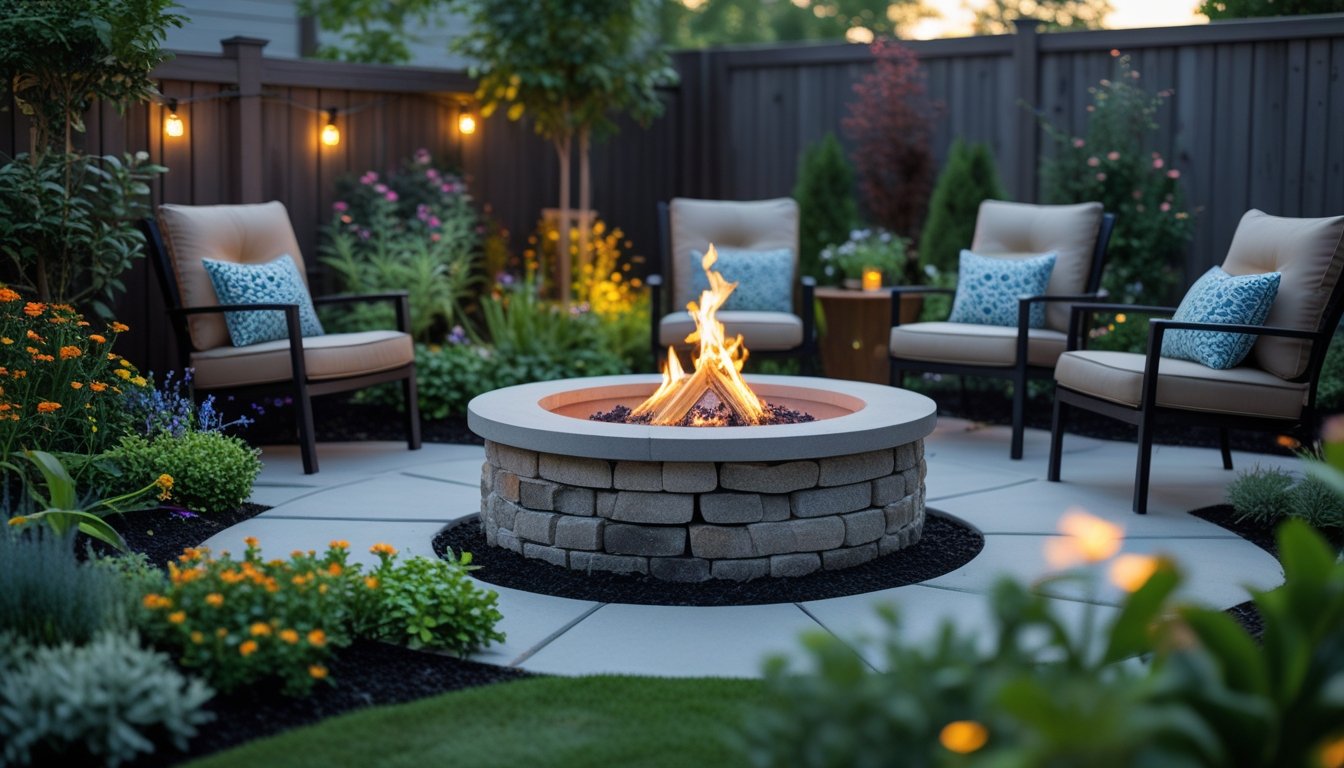Late updated: 14 Sep 2025 08:09
Written by: James Whitaker
Enhancing Small Gardens With Fire Pit Designs: Transform Your Outdoor Space
Transforming small gardens into inviting retreats can seem challenging, yet it's astonishing what a well-designed fire pit can achieve. A small garden can become a focal point of warmth and style with the addition of a cleverly designed fire pit. These elements offer not just physical warmth but also a welcoming ambience that encourages gatherings and enhances the garden's aesthetic appeal.

Incorporating a fire pit into a small space requires creativity and careful planning. We explore innovative designs that fit both compact patios and tiny garden niches, ensuring that every inch of space is utilised effectively. From rustic stone circles to sleek, modern designs, there's a fire pit style for every garden aesthetic and personal preference.
A fire pit doesn't just serve as a heating element; it's a versatile feature that significantly elevates the outdoor experience. Whether we're hosting an intimate gathering or enjoying a quiet evening under the stars, a carefully chosen fire pit can transform our small garden into a haven of comfort and beauty.
Key Takeaways
- Thoughtful fire pit design enhances small garden spaces.
- Creative use of fire features creates inviting outdoor areas.
- Selecting the right design maximises space and style.
Essential Fire Pit Designs for Small Gardens

Creating a warm and inviting atmosphere is key in enhancing any small garden. Fire pits offer variety and flexibility in design, making them essential features for limited spaces.
Selecting the Right Type of Fire Pit
Choosing the appropriate fire pit involves considering materials, size, and style. Metal fire pits, such as steel or cast iron, provide durability and a sleek aesthetic. They are resistant to weather conditions, making them ideal for year-round use. Stone or brick fire pits add a rustic charm that blends well with natural surroundings. Our priority is to select a fire pit that complements the garden's design while ensuring safety and functionality. Taking note of whether the fire pit is wood-burning or propane-fuelled might guide us in selecting the right type depending on convenience and local regulations.
Maximising Space with Sunken and Corner Fire Pits
In small gardens, utilising space effectively is vital. Sunken fire pits are designed by lowering the fire area into the ground, which creates a discreet and more spacious feel. This option requires planning and building but can enhance the layout significantly. Corner fire pits are excellent for maximising unused garden space. Placed neatly in a corner, they allow room for seating and other features. For both sunken and corner designs, using pea gravel or decorative stones around the fire pit area can add texture and define the space, contributing to an inviting ambience.
Portable and Fire Bowl Options for Flexibility
Flexibility is a major advantage in a small garden, and portable fire pits or fire bowls provide just that. These options allow us to move the fire pit to different locations based on our needs—a practical solution for multi-use spaces like a deck or patio. Fire bowls often crafted from metal, offer the same warmth and charm in a compact form. Their portable nature also makes them easy to store during off-seasons, prolonging their lifespan. Choosing a portable design aligns functionality with the option to adapt and rearrange the garden layout as desired.
Creating Inviting Outdoor Spaces with Fire Features
Fire features effortlessly transform outdoor spaces into warm and inviting environments perfect for gatherings. By strategically combining elements such as seating, hardscape, and other architectural features, we can create functional and aesthetically pleasing spaces that extend our living areas beyond the walls of our homes.
Styling Seating Areas with Adirondack Chairs and Outdoor Furniture
To start, pairing fire pits with Adirondack chairs can create a classic and comfortable seating arrangement. These chairs are celebrated for their sloped design, which encourages relaxation. Using durable outdoor furniture such as weather-resistant sofas or modular seating options can enhance comfort and style.
Positioning these pieces around a fire pit fosters conversation and offers ideal spots for enjoying warmth. Incorporating cushions in weather-proof fabrics adds both colour and comfort, making the area an inviting nook for guests. A strategically placed fire pit table provides a convenient surface for beverages and snacks, enhancing the functionality of our seating areas.
Incorporating Hardscaping, Lighting, and Accessories
Hardscaping plays a pivotal role in defining outdoor spaces. Integrating elements like a smooth concrete patio or decorative stonework can complement the aesthetics of our fire pit area. Adding paths or stepping stones enhances accessibility and visual interest to the space.
To extend usability into the evening, string lights can be draped overhead or wrapped around trees to cast a gentle glow, creating a magical ambiance. Accessorising with items such as firewood holders and elegant lanterns can further elevate the setting. These accessories not only improve functionality but also add decorative elements that make the space feel personal and inviting.
Integrating Fire Pits with Pergolas, Water Features, and Outdoor Kitchens
Integrating a fire pit with a pergola provides structure and shade. This combination can create a well-defined living area that is both sheltered and open to the sky, perfect for star gazing or daytime lounging. Pergolas can support climbing plants, enhancing the natural beauty of the setting.
Additionally, adding water features such as a small pond or fountain introduces soothing sounds and a refreshing contrast to the fire’s warmth. For those passionate about outdoor entertaining, including an outdoor kitchen complete with a grill and countertop area can transform our backyard into a culinary hub, allowing us to cook and serve meals near the fire's comfort.
Frequently Asked Questions

Choosing the right fire pit for a small garden involves several considerations. These include material safety, efficient space utilisation, maintenance practices, design focal points, adherence to safety regulations, and environmentally friendly fuel options.
What are the safest fire pit materials to use in a compact garden area?
When considering fire pits for smaller gardens, it's essential to select materials that can withstand heat and weather conditions. Stone, metal, and brick are popular choices due to their durability and minimal maintenance. Ensuring that materials are fire-resistant reduces risk and enhances safety in confined spaces.
How can one integrate a fire pit into a small garden without compromising on space?
Maximising garden space while incorporating a fire pit requires strategic planning. Vertical elements such as multi-level planters or integrating a fire pit into existing garden features can help optimise space. Consider portable or collapsible designs which allow flexibility and convenience, maintaining the garden's functionality.
What maintenance considerations should be accounted for with fire pits in smaller outdoor spaces?
Regular cleaning and inspections are crucial in smaller areas to ensure fire pits remain safe and functional. Checking for rust, debris build-up, and structural damage helps prolong the fire pit's life. It's also important to consider weather protection solutions, such as covers, to prevent damage.
Are there specific design tips for creating a focal point with a fire pit in a limited garden space?
A fire pit can become a captivating centrepiece in a small garden by using creative designs and layouts. Elevate the pit with a contrasting material or surround it with seating to encourage social use. Integrating lighting, such as lanterns or fairy lights, highlights the fire pit and enhances the garden's ambience.
How can one ensure compliance with safety regulations when installing a fire pit in a small garden?
Understanding local regulations is vital before installation. Ensure the fire pit is positioned away from flammable objects and complies with any height or distance requirements. It's important to consider ventilation and have easy access to extinguishing tools like sand or a fire extinguisher.
What are the best fuel options for fire pits in small gardens that minimise smoke and environmental impact?
The choice of fuel can significantly affect smoking and environmental aspects. Opt for sustainable options such as bioethanol or wood pellets, which produce cleaner burns with less smoke. Natural gas is another option that offers a cleaner burn, but requires a more complex installation process.
